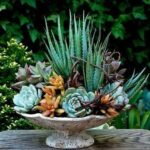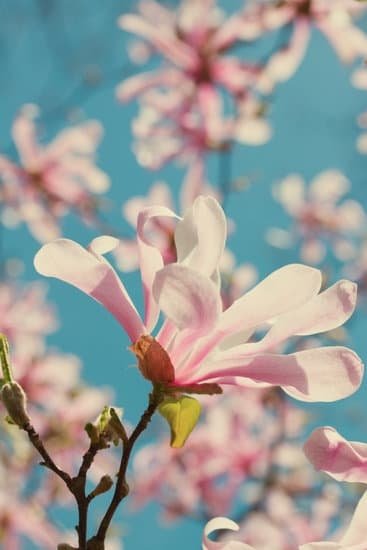Introduction to Container Gardening Fall
Container Gardening Fall can be an incredibly rewarding and enjoyable experience. With the shorter days, cooler temperatures, and decreased water stresses associated with fall weather, it is the ideal time to begin crafting a perfect container garden for your home. Not only does cooler weather mean that there are fewer pests to contend with, you can also begin to think about working on larger scale projects and expanding your garden. With a little bit of planning, you’ll have plenty of time to get your container garden looking healthy and vibrant during the autumn months.
This season is an opportunity to take advantage of the fact that most plants’ growth will slump slightly as daylight diminishes and temperatures drop. This means that less watering is needed than in spring or summer – which gives you a great window of opportunity to add some new specimens. Choose hardier varieties such as pansies, ornamental kale, salad greens, mums and asters; they will continue bringing color into winter and benefit from less rainy periods compared to warmer months.
When thinking about container gardening in fall, look into planting bulbs like tulips and daffodils now which will provide stunning blooms in spring. These bulbs need approximately 10-12 weeks of cool soil temperature before they start germinating so don’t wait until too late into fall before getting them into the ground! Start by ensuring adequate drainage for your containers; this helps ensure roots stay healthy during long droughts or rainy periods during autumn months . After that – go ahead let those creative juices flow; utilize all sorts of shapes, heights sizes – mix up colors textures – make sure there is something for everyone’s taste!
Preparing Containers for Fall Gardening
1. Gather your materials – Before you get started, you should gather all of the supplies and tools that are needed for container gardening in the fall season. You will need pots or containers, potting soil, fertilizer (if needed), support structures (such as stakes), mulch, decorations, seeds/plants, and watering equipment.
2. Choose the right color and texture – When selecting pots or containers for a fall garden, colors such as neutral earth tones or autumnal reds and oranges will be most effective in creating a peaceful environment. You will also want to consider texture when choosing a planter; texture such as terra cotta gives an old-fashioned look while rough cement offers rustic charm.
3. Adjust water and nutrient levels – Your plants’ water and nutrient needs will vary depending on what type of plant it is that you are growing in your container garden. Before planting, be sure to read up on how much water or fertilizer each particular species requires so that you can accurately adjust accordingly prior to planting.
4. Plant your desired species – After your pots and containers have been filled with soil and stocked with the proper amount of nutrients required by each of your desired species of plants, it’s time to plant! Place the plants in the areas designated for them according to their unique requirements for sun exposure and drainage (i.e., some may do best if placed high up against windows where they can receive more light).
5. Arrange decorative pieces – Once all of your plants are in place, you should arrange any decorative pieces that you would like to use to give your container garden more personality (such as statues or wind chimes). Additionally, use mulch around the base of each plant to provide extra insulation during cold weather months; this will help retain moisture in the soil as well as further insulate your plants from extreme temperatures during cold winters months.
Selecting Bountiful Container Plants for Fall
Looking to use your porch, balcony, deck, or patio to have a bountiful fall harvest? Container gardening provides the perfect solution. You can enjoy the beauty of autumn with colorful foliage, bountiful blooms and aromatic fragrances without needing a large garden plot.
Choose from a variety of vegetables and herbs that thrive in cool weather, such as kale, broccoli, spinach, chard and parsley. These will last through until early winter if you provide the plants with plenty of sunshine and protection from hard frost. To maintain needs for water and nourishment fill your containers with fresh potting soil each season to make sure it remains full of nutrients.
For pre-winter visuals pair edible crops with vibrant autumn flowering plants such as pansies, violas and sedums. Summer annuals like geraniums can also be grown over later months but may need extra mulching if temperatures drop too low during winter evenings. If you want mid-autumn colour look no further than chrysanthemums; these hardy flowers bloom profusely provided they get good sun exposure throughout their growing period.
But it doesn’t end there…for smells that remind us of fall go for scented geraniums in creamy whites or rosy pinks along with goldenrod plants which will give off hints of apple while releasing its delightful scent in late October/early November when temperatures start to cool down. Group them together at the front door or place by windowsills so the aromas are experienced when indoors as well!
Finally enjoy guidance throughout your adventuring through ready-made options from nurseries – seasonal planting collections offer a mix of flowers providing visual excitement all year round without much effort needed on your part! With caring for containers always keep an eye out on days where extreme cold is forecasted; cast iron pots (that are naturally heavier) insulate better than terracotta planters even better still line any outdoor clay containers with bubble wrap so roots are kept warmer during cold spells – this way you’re guaranteed larger yields come harvest time and don’t forget to add compost which satisfies their thirst while replenishing depleted soils!
Fall Containers for Functional Gardening
Container gardening in the fall comes with a lot of benefits. It allows you to grow your own food and enjoy fresh produce harvested from your yard, or to add decorative seasonal elements to brighten up an outdoor space. Fall container gardening is also a great way to enjoy fresh herbs during the colder months.
Food production – Plant root vegetables such as beets, carrots, turnips and radishes in your containers for a harvest that can extend through winter. Leafy greens will go dormant in cold weather but kale, mustard greens and spinach are still hardy enough for fall harvests. Also consider growing fruit-bearing plants such as strawberries or raspberries that can provide tasty treats throughout the season!
Kitchen-to Table Recipes – Container gardening is the perfect way to get creative with meal ideas using ingredients from your garden. Herbs could be used for simple pesto recipes or infused into oils or vinegars, adding easy flavor accents to meals. Root vegetables such as carrots or potatoes can also be roasted and served as sides for your Thanksgiving feast!
Decoration – Brightly colored containers can help create bold focal points full of warmth and texture. Consider adding late-blooming crops like mums, ornamental grasses or other colorful perennials that will stay alive throughout winter months. You can also add holiday-themed containers featuring pumpkins of all shapes and sizes which are sure to bring cheer to any get together!
Closing Thoughts on Container Gardening Fall
When harvesting your produce, make sure to pick fruits and vegetables when they have reached their peak of ripeness. This can vary greatly depending on what kind of plant you are harvesting and your location – in some climates it may be necessary to harvest before the first few frosts hit to maximize freshness and flavor. Store produce properly in cool, dry places. For example, root vegetables like carrots, potatoes, turnips and rutabagas should be stored in perforated bags or bins filled with sand or soil that keep moisture from accumulating.
Additionally, it’s important to winterize containers for cold weather months. Be sure to take measures such as insulating the soil and wrapping the planter in cloth or straw to prevent frost damage. If a severe freeze is expected in your area, bring potted plants indoors where possible, or shift them into a more sheltered space such as a shed or garage for the duration of winter.
Finally, experienced container gardeners recommend starting seeds indoors in early spring so they gain a jump start come seed time. This can help encourage faster overall growth whilst producing an abundance of flowers come summertime! Additionally, plan ahead when selecting varieties suitable for each season so you can enjoy all the different flavors and colors that each plant offers while extending your growing season as much as possible.

Welcome to my gardening blog! I am passionate about plants and enjoy sharing my knowledge and experiences with others. In this blog, I will write about everything related to gardening, from tips on how to get started to updates on my own garden projects.





